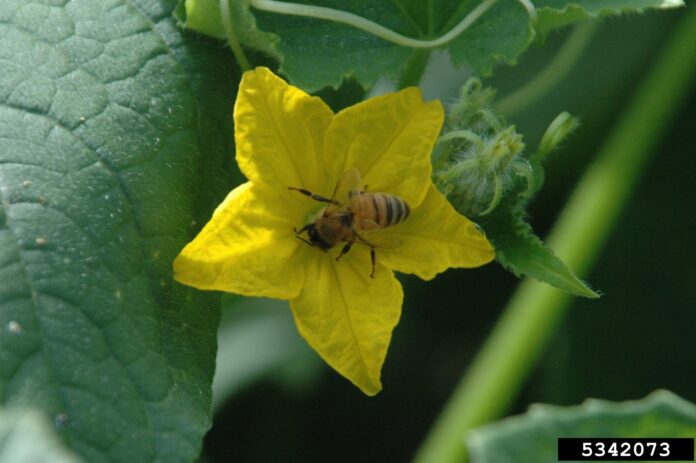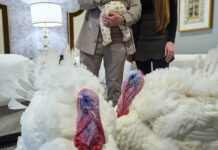
(Georgia Recorder) — If you catch your neighbor staring at a plant and counting bugs, don’t be alarmed – they’re doing science.
Friday and Saturday mark the Great Southeast Pollinator Census, a University of Georgia project aimed at creating a head count of all the creepy crawly critters that help keep Georgia’s plants in bloom.
Last year, more than 18,000 people and exactly 398,269 insects took part in the census across Georgia, North Carolina, South Carolina and Florida. This year, the count is expected to be even higher as Alabamians will join in for the first time since the count started in 2017.
Agriculture is Georgia’s biggest industry, and little pollinators contribute $600 million a year just by doing what comes naturally, said Becky Griffin, a pollinator health associate for the University of Georgia Extension and mastermind behind the count. But pollinators like bees, wasps, flies, butterflies and others count for more than just dollars, she added.
“Do you like eating watermelon? Do you like peaches and apples and strawberries? Because your plate’s going to look a lot different if we don’t have pollinators, and it’s going to be a lot more expensive as well,” she said. “Do you like flowering plants? Because pollination is not just about what we eat, but it’s how plants make seeds, how they continue their species. So it really does affect everybody, whether you live in an apartment complex in Midtown or whether you have a farm in south Georgia. And the beauty is we can all make a difference.”
Many participants are biologists, entomologists or gardeners, but a lot of people are complete bug-counting amateurs, and even children can take part.
“We have a lot of what we call ‘non-traditional stakeholders’ who also are out there counting,” Griffin said. “An example is people at the Georgia Aquarium have contacted me. They’re out counting. People at the Monastery for the Holy Spirit, they count every year. The Daughters of the American Revolution make a big push for people to count. So it’s not just the biologists and the ecologists, but really it’s all citizens who want to participate in something that’s meaningful.”
Participants can download a tally sheet on the census website and find out everything they need to know, like how to tell a bumblebee from a carpenter bee (bumblebees have fuzzy abdomens while carpenter bees have smooth tummies). When the day comes, the whole job is to watch a pollinator plant for 15 minutes, counting and categorizing each time an insect lands on it. You can repeat it as many times as you want.
It’s a simple job, but the data that citizen scientists gather can be a big deal.
“Growers use the data to determine what kind of insects are in their county, in their area, and what they need to do to up that if they need to. Educators use the data in school lessons,” she said. “There are some peer-reviewed journal articles about the data as well, so it is being used. It’s not just a fun, feel-good project. It is generating important data.”
People ranging from researchers and teachers to gardeners and city planners make use of the data, and with a few more years of counting, Griffin said she hopes it will be of use to scientists studying the declining honeybee population.
To learn more or participate, visit the Great Southeast Pollinator Count website.






